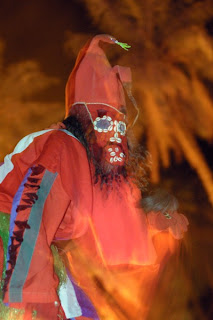Music plays an important part of Gambian culture: “The drum” made of carved wood and goatskin seems a simple instrument, but use of the drum is not limited to musical entertainment, such as in music from the Americas or Europe. It has a serious application in many societies across the continent.
Many West African tribes are well known for their use of drumming in daily activities and special events and a native speaker of a language can often perceive an actual message in the music. This effect also forms the basis of drum languages (talking drums). In days gone by drumming was used as a way of communicating news from village to village, for example to inform members of their respective tribes about major news, such as a death, funeral, meeting, or celebration within the tribe. In the past it was used as a warning of imminent attack.
The drum is the sign of life – its beat is the heartbeat of the community. Such is the power of the drum to evoke emotions, to touch the souls of those who hear its rhythms. The beating of the drum is an opportunity to give one another a sense of belonging and of solidarity. It is a time to connect with each other, to be part of that collective rhythm of the life in which young and old, rich and poor, men and women are all invited to contribute to the society.
Traditional music is mostly functional in nature, there are for example, many different
kinds of work songs, some of the drumming that goes on in the middle of the day even
helps women and men of the tribe get daily chores done more quickly as the drums allow
them to follow a rhythm while they work, Ceremonial or religious music accompanies
childbirth, marriage, hunting, and even political activities.
Ceremonial music will often be accompanied by the Balafone and the Kora, which
produces a harp-like sound. The player uses the thumb and index finger of both hands to
pluck the strings in polyrhythmic patterns. The combination of instruments used depends
on the tribe. Male griots, or praise singers, are born into the profession. They most often
act as a solo or duo instrumentalists and are traditionally heard at weddings and infant
naming ceremonies.
They attend the ceremonies to bring good luck with their songs and
historical recitations. In some areas they may form part of a larger group that may include
Kora, Calabash, Flute and Tamo Drums. The griot or “Jali” society acted as historians,
advisors, arbitrators, praise singers and storytellers and essentially these musicians were
walking history books, preserving ancient stories and traditions through song. Their
inherited tradition was passed down through generations. They were said to have deep
connections to spiritual, social, or political powers through their music and speech. The
talking drums (Tamo) are some of the oldest instruments used by West African griots
and their history can be traced back to the ancient Ghanaian empire. Many griots have
developed a highly sophisticated genre of music centered on the talking drum.
Our members are involved in Gambian restaurants, tours, excursions, eco-tourism, car rentals, and shops within the vibrant Gambia Tourism Industry. kinds of work songs, some of the drumming that goes on in the middle of the day even
helps women and men of the tribe get daily chores done more quickly as the drums allow
them to follow a rhythm while they work, Ceremonial or religious music accompanies
childbirth, marriage, hunting, and even political activities.
Ceremonial music will often be accompanied by the Balafone and the Kora, which
produces a harp-like sound. The player uses the thumb and index finger of both hands to
pluck the strings in polyrhythmic patterns. The combination of instruments used depends
on the tribe. Male griots, or praise singers, are born into the profession. They most often
act as a solo or duo instrumentalists and are traditionally heard at weddings and infant
naming ceremonies.
They attend the ceremonies to bring good luck with their songs and
historical recitations. In some areas they may form part of a larger group that may include
Kora, Calabash, Flute and Tamo Drums. The griot or “Jali” society acted as historians,
advisors, arbitrators, praise singers and storytellers and essentially these musicians were
walking history books, preserving ancient stories and traditions through song. Their
inherited tradition was passed down through generations. They were said to have deep
connections to spiritual, social, or political powers through their music and speech. The
talking drums (Tamo) are some of the oldest instruments used by West African griots
and their history can be traced back to the ancient Ghanaian empire. Many griots have
developed a highly sophisticated genre of music centered on the talking drum.















